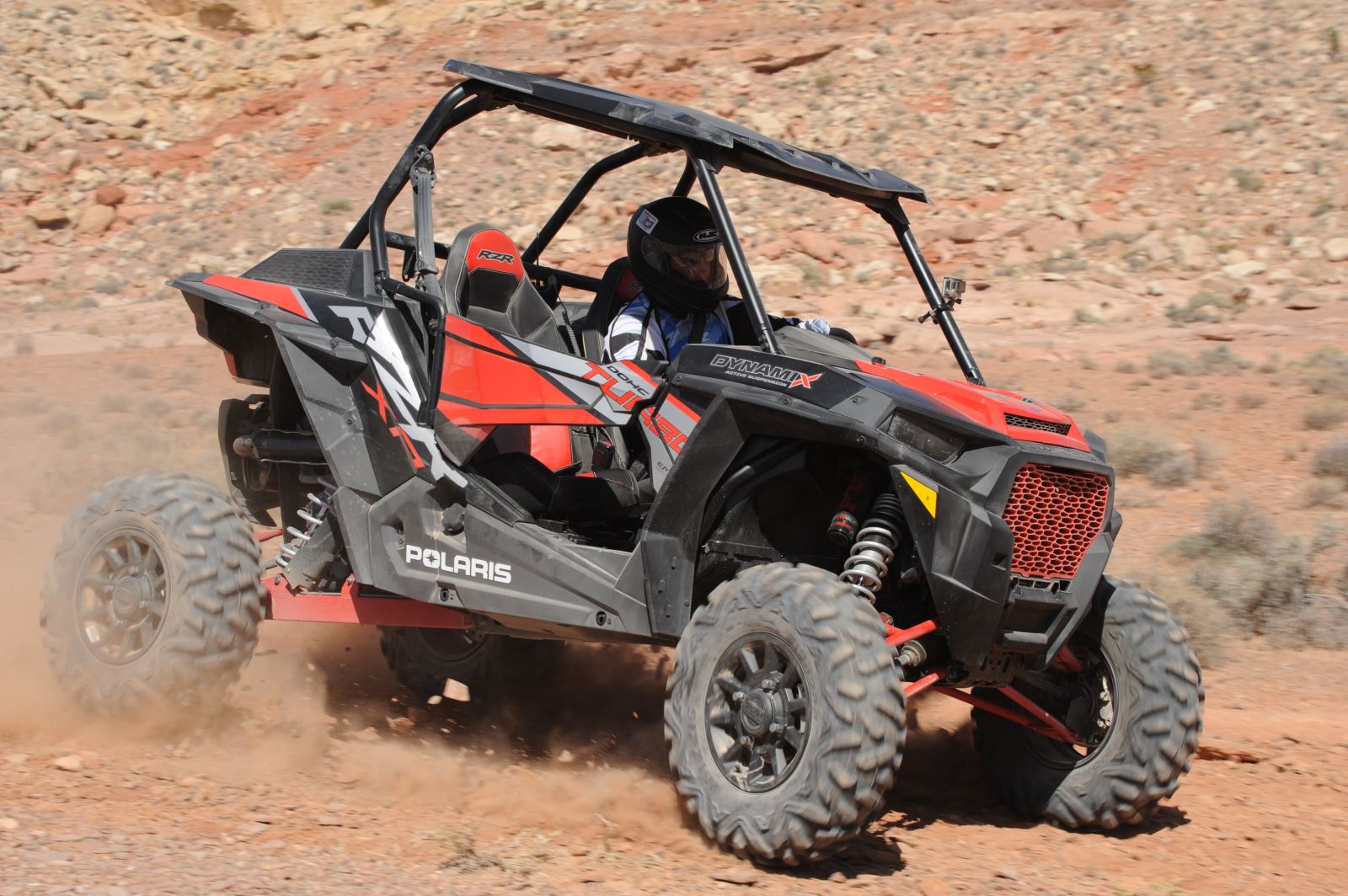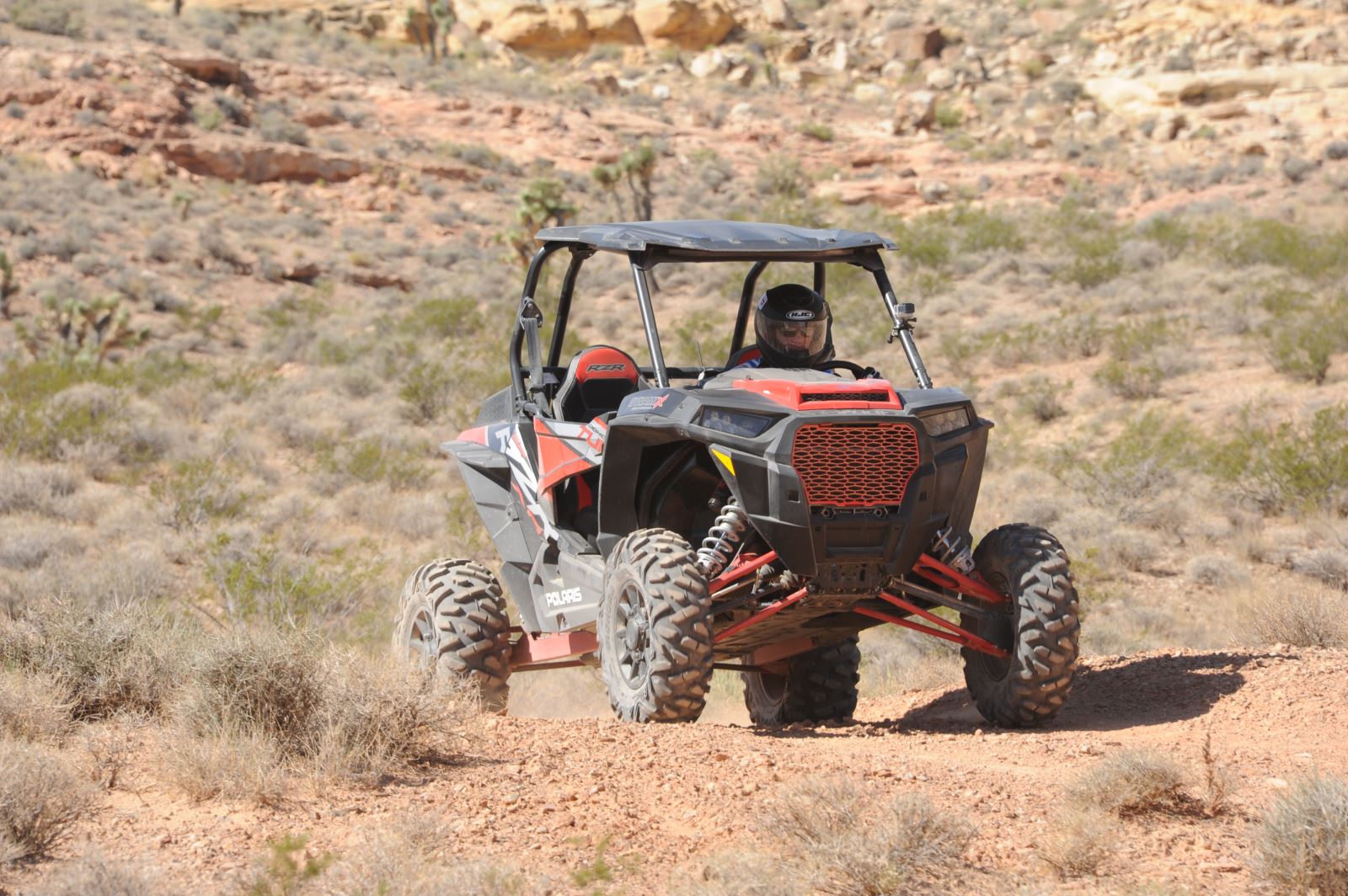Polaris’ RZR Dynamix suspension system is a tale of two big features: one practical and the other what we would call the “bells and whistles” part of the system.
Before we jump into that, though, one of the first things you need to know about Polaris’ Dynamix system is how to say it. When we were first introduced to Dynamix last year in the desert south of Las Vegas, the correct pronunciation is one of the first things we learned.
Think of “dynamic” but with an “x” at the end of the word instead of “c.” It’s a long a, not a short a sound. It makes a difference, especially to those who have toiled over this system for years to make it come to fruition.
Dynamix is an intelligent suspension system designed specially and especially for off-road riding and is the only suspension for dirt or sand application that we know of that offers the driver on-the-fly adjustment options at the push of a touch screen.
Dynamix might actually change the way you ride. It’s that good.

The Flip Of A Switch
Think about it. If you can adjust your shock settings simply by flipping a toggle switch on the dashboard, you can rail through sections of desert or sand without having to stop and adjust your shock settings manually. Simply put, you can ride harder in all sorts of trail conditions. Yes, you could change the shock settings on previous RZRs, but how many times did you just “let it go” when conditions changed because you didn’t want to get out and change the shock settings because you had just done it a few minutes ago in different conditions?
That’s the practical part of the Dynamix suspension system: the ability to change the shock settings on the fly. We know some might be a bit skeptical on the “on the fly” part, thinking it can’t adjust that fast. The system monitors seven vehicle inputs to make adjustments 200 times a second.
The bells and whistles part is being able to “see” what your shocks/suspension are doing via readings on the glove-touch, weather-resistant 7-inch display. The suspension system continually indicates the suspension control system status, which includes compression and dampening, selected mode, g-force, pedal position, steering angle, brake status and diagnostics.
The bells and whistles supplement the seat-of-the-pants feeling and driver intuition. Seeing what your suspension system is doing in real time makes you a better driver, or at the very least, improves your ride because you can see what’s going on right then and make adjustments right then.
We’ll admit, watching the suspension work is interesting, although there is probably a disclaimer somewhere that states it’s better to keep your eyes on the trail and not on the display.

No Shock Changes
Dynamix is a part of Polaris’ Ride Command feature, which has been around for a couple of years. Also, according to Polaris officials, the Fox 2.5 Podium Shocks with Bottom-Out Control on Dynamix-equipped RZRs really haven’t changed much, “just a little on top.”
Dynamix offers three shock settings: Comfort, Sport and Firm. Comfort is the softest setting and reads “0” on the screen. The Comfort setting will give the RZR a plush ride. The Sport setting is somewhat akin to a medium shock setting. The readings in the Sport setting really varied as we raced across the Nevada desert. It would start out as low as 2/4 (front/rear or side to side) and went as high as 8, depending on the trail conditions. You could see the readings change in those conditions, including when stopping or turning.
In the Firm setting, all the shocks went to “10” and were essentially locked in there, giving a very stiff ride. This was a good setting for the small rivulets that crossed the trail or when we hit any big dips. When we got to the whoops section of the trail, we flipped the switch to Sport, sometimes Comfort.
Our Dirt Toys test staffer for our ride in the Nevada desert that day was Lyle Dahlgren. Dahlgren knows a lot about suspensions and vehicle dynamics and offered great insight to the Dynamix system. He admits he was a “little unsure” that Dynamix would perform the way Polaris engineers claimed it would.

